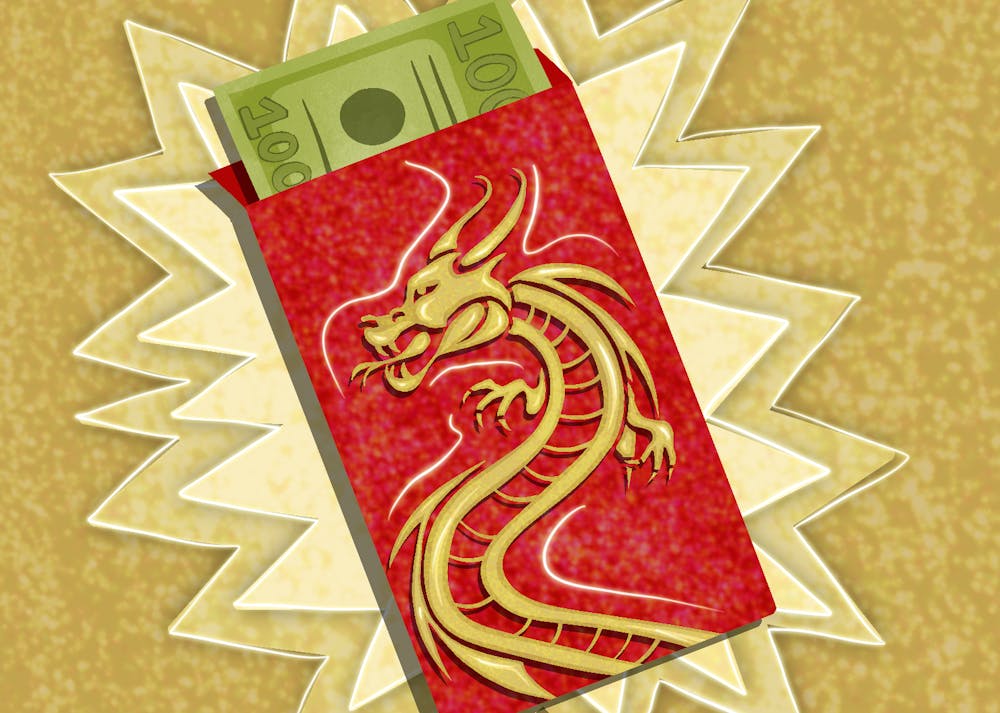On Thursday night, yellow and red lanterns decorated the trees outside of Hayden Library as students gathered in small groups to partake in activities and collect trinkets in anticipation of the Lunar New Year.
The event, arranged by the ASU Chinese English Language Bridge, included lantern-making and mahjong while eating and celebrating the upcoming holiday.
According to Chinese culture, this new year welcomes the dragon, an animal that is supposed to bring good luck, strength and artistic energy, as people celebrate traditions and family.
The arrival of spring with the Lunar New Year, also called Chinese New Year, is celebrated in Asian countries such as South Korea, Vietnam and China.
"In general, no matter if it's Lunar New Year or Chinese New Year, the meaning behind this festival is simply for families to get together and give thanks for the past and hopes for the future ahead," Douglas Yu, a sophomore studying chemical engineering and treasurer of the Chinese American Student Association, said.
Kicking off on Feb. 10, the fifteen-day celebration varies by culture.
According to National Geographic, the traditional calendar used was determined by the moon and the sun. Every month started on the new moon, and the new year began between the winter solstice and spring equinox.
Each year is represented by one of twelve animals, each one harboring a set of characteristics to describe people born in whatever year that animal represents.
For Hannah Lee, a freshman studying graphic design, this is the extent of her Lunar New Year knowledge.
"I mean, my nickname was Hannah Banana, and they called me a little monkey when I was little," said Lee, who was born during the year of the monkey.
Being the year of the dragon, it is believed to be more lucky and prosperous. Students are hoping it's a statement that rings true.
"I'm hoping so," Lee said. "Although I have seen a lot of comparisons of 2020."
Associate Professor of Chinese Literature Nicholas Morrow Williams used to live in Hong Kong and still celebrates the holiday.
"One important tradition that is hard to appreciate from abroad is hanging up red banners with parallel couplets celebrating the new year," Morrow Williams said. "These often incorporate the animal for that year, so this year it could be something like, 'Happy dragons fill the sky like clouds, joyous spirits spread without bounds!'"
Traditions include lantern festivals, dances and delicacies such as turnip cake. Other traditional foods include longevity noodles symbolizing a long life and dumplings symbolizing wealth.
The lion dance is a favorite tradition of many due to its theatrical choreography and bright, colorful costumes.
"My favorite Lunar New Year tradition would be watching the Lion Dances and setting up the festive decorations that come with it," Yu said. "It is amazing to be able to watch something that has transcended from generation to generation."
According to Yu, the firecrackers and decorations with the dance were used to scare away Nian, a mystical, menacing beast that used to terrorize villages.
Morrow Williams said firecrackers have caused anxiety when celebrating the Lunar New Year because of the loud noises and smoke that are released.
"When it is celebrated outside of China, such as in an American Chinatown, this has led to a lot of anxiety by people not aware of the Lunar New Year tradition," Morrow Williams said.
Another tradition carried over into modern culture is the passing of "red packets" or envelopes. These packets were historically given to a younger generation by an older one and contained a former type of Chinese currency.
"When the younger generations visit during the Lunar New Year and give their thanks or show their respects to the elder generation, the latter repays this greeting by giving out these 'red packets' that symbolize good wishes and hopes for the year coming ahead," said Yu.
For some, the packets contain sweets or chocolate, such as those distributed at the Chinese English Language Bridge event, for others they contain money.
There are many ways students can partake in the celebrations. Many events are held around Tempe through Saturday to celebrate the new year. Even students with limited knowledge of the holiday can attend events, such as the one on Thursday. Students of all backgrounds were seen gathered at Hayden Library in anticipation of a lucky and prosperous year.
Yu encourages students to get involved in the holiday and wear red. Red portrays good health and prosperity in Chinese culture, according to Yu.
"It would be nice for ASU to remind all to spend time with their families and to be thankful for those around us," said Yu.
Edited by Katrina Michalak, Walker Smith, Caera Learmonth and Morgan Kubasko.
Reach the reporter at glmcfar1@asu.edu and follow @ginia_mcfarland on X.
Like The State Press on Facebook and follow @statepress on X.
Ginia is a junior studying journalism and mass communication with a minor in criminology. This is her third semester with The State Press. She has also worked at Arizona Capital Times and KTAR News.




